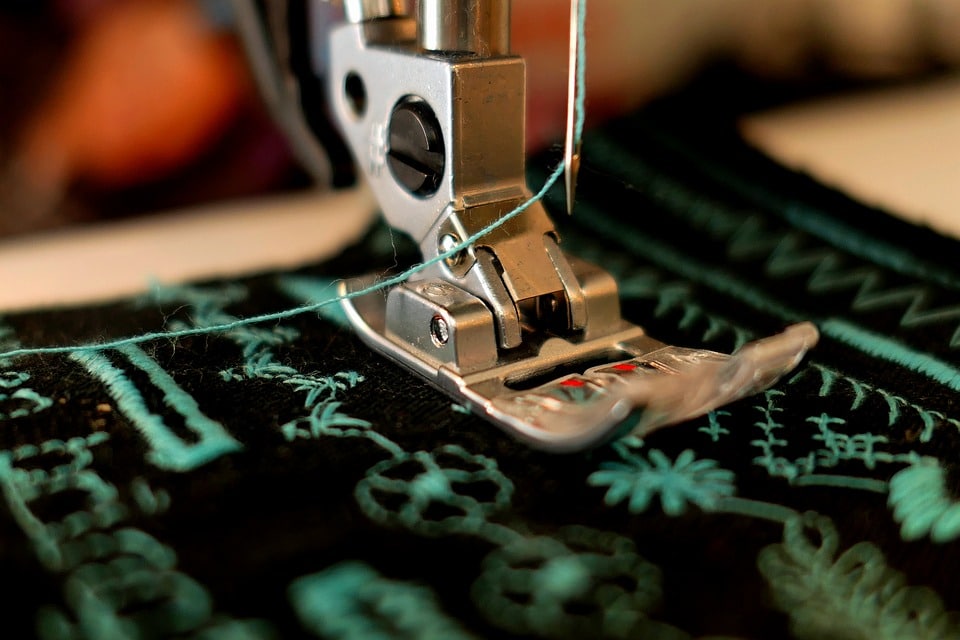
Presser Foot Fabric Sew Sewing Machine Hand Labor
The creation and invention of the sewing machine liberated ladies of this errand, freed labourers from less paid long periods of hours in sewing plants, and delivered a wide assortment of more affordable apparel. The modern sewing machine made a scope of items conceivable and reasonable. The home and convenient sewing machines likewise acquainted beginner sewers with the funs of sewing as a specialty.
History of Sewing machine and who invented it
It is notable how Industrial Revolutions influenced and transformed people. The First Industrial Revolution toward the start of the eighteenth century prompted automation in numerous fields. Subsequently, it caused changes in sewing process.
By this period sewing was finished by hand. The presence of the main mechanical sewing machines empowered quicker and higher generation. The principal patent identified with the mechanical sewing machine showed up in 1755. It was a sewing needle intended for a machine. The pioneers in the invention of the sewing machine were working diligently toward the finish of the eighteenth century in England, France, and the United States.
Charles Wiesenthal made no portrayal of any machine in his patent however it was more than clear that there was a requirement for a wonder such as this. A couple of decades later, the principal sewing machine patent showed up. Thomas Saint, an English creator, planned the principal sewing machine! He made a patent and most likely manufactured a working model yet there is no verification that he did. This is only a suspicion.
This first machine was intended for leather and canvas. What’s intriguing (thinking of it as was developed in the First Industrial Revolution) is that it was point by point. It had a feed component, an overhanging arm, and a vertical needle bar.
The English cabinetmaker Thomas Saint accumulated the main patent for a sewing machine in 1790. Leather and canvas could be sewed by this big machine, which utilized a scored needle and bit to make a chain stitch. In the same way as other early machines, it replicated the movements of hand sewing. In 1807, a basic advancement was made by William and Edward Chapman in England. Their sewing machine utilized a needle with an eye in the purpose of the needle rather than at the top.
In France, Bartheleémy Thimmonier’s machine protected in 1830 actually caused an uproar. A French tailor, Thimmonier built up a machine that sewed texture together by chain sewing with a bended needle. His sewing factory created army dresses for the French Army and had 80 machines at work by 1841. A crowd of tailors dislodged by the production line revolted, obliterated the machines, and almost killed Thimmonier.
Across the Atlantic, Walter Hunt made a machine with an eye-pointed needle that made a bolted stitch with a second string from underneath. Chase’s machine, formulated in 1834, was rarely licensed. Elias Howe, credited as the innovator of the sewing machine, planned and protected his creation in 1846.
Some Fun facts about Sewing machine
If you are into sewing and have got your fist sewing machine ( If not you can first go through basics of learning sewing and get sewing machine reading good reviews) then you can learn more fun facts about it here.
- The normal life expectancy of cotton texture is around 100 years. In case you’re making a treasure quilt, this makes cotton the best fabric.
- Ladies’ buttons are on the left half of their clothing since when button pieces of clothing originally became, just ladies with hirelings could bear to wear them. They were sewn on the left side to make it simpler for workers to enable these rich ladies to dress.
- Zippers were first created in 1893 to accelerate the way toward wearing shoes and boots, and they were before long adjusted to jeans and skirts.
- The notch on a needle is made to enable the thread to lie near the needle as it goes through the eye.
- The thimble is thought to have been created by Dutch tailors.
- Cast iron Singer sewing machines were the absolute most strongest ever machines created. Singer, stressed that the market would end up immersed with machines that were being passed down for ages, made new flimsier machines and began a repurchase program for firsts. Old machines were crushed with heavy hammers to keep them off the market.
- It is been said that button sleeves on men’s coats were initially requested sewn on by Napoleon Bonaparte. He needed an approach to shield his officers from cleaning their noses on their sleeves, so he requested button be sewn on the sleeves.
- The main cotton prints in America were called calicoes and were made around 1780. They were named after calico, which originates from Calcutta, India, where these hand-woven printed textures were made.
- Hand embroidery machine was created by Josue Heilmann about 20 years before Isaac Singer’s sewing machine in 1846, got patent for his design.
- Sewing is the one of the earliest type of textile workmanship. It has been known since by stone-age individuals even before weaving was acknowledged.
- Early sewing threads originated from different creature body parts like ligament, catgut and even veins.
- The firsts needles utilized during the stone-age period were made up of animal bones and ivory.
- China is the top clothing maker and exporter pursued by India, Italy, Germany, and Bangladesh
- There are 25 sorts of hand sewing archived registered at 2017.
- Measured design didn’t exist before 1863. Ladies used to dismantle old garments and use them as advisers for make new apparel, and the few examples out there just came in one size. Ladies making dress needed to modify the size of the example for everybody, from babies along with the grown men
- Style pursues financial conditions. During the 1930s and 1940s, after the securities exchange crash and during war time, design of clothing were utilitarian and built to save money. During the 1950s, during the financial boom, crinolines, poodle skirts, sweaters and other increasingly costly things ended up well known. During the 1980s when the economy was by and by blasting, huge pieces of clothing were by and by in design
Future of Sewing machines
The converging of the capacities of the electronic sewing machine and the software business is making a regularly enlarging scope of innovative highlights for this adaptable machine. Endeavors have been made to create threadless machines that infuse warm liquids that solidify with warmth to complete creases, yet these may fall outside the meaning of “sewing.” Large embroidery can be machine-delivered dependent on structures created onscreen utilizing AUTOCAD or other design programming. The product enables the fashioner to contract, amplify, pivot, reflect structures, and select colours and kinds of stitch that would then be able to be weaved on materials extending from glossy silk to leather to make items like baseball caps and coats. The speed of the procedure lets items praising the present triumphs hit the road by tomorrow’s business day. Since such highlights are additional items, the home sewer can purchase an essential home sewing machine and upgrade it throughout the years with just those highlights most much of the time utilized or of intrigue. Sewing machines become individual making gadgets and, in this manner, appear to have a future as promising as the creative mind of the administrator.
